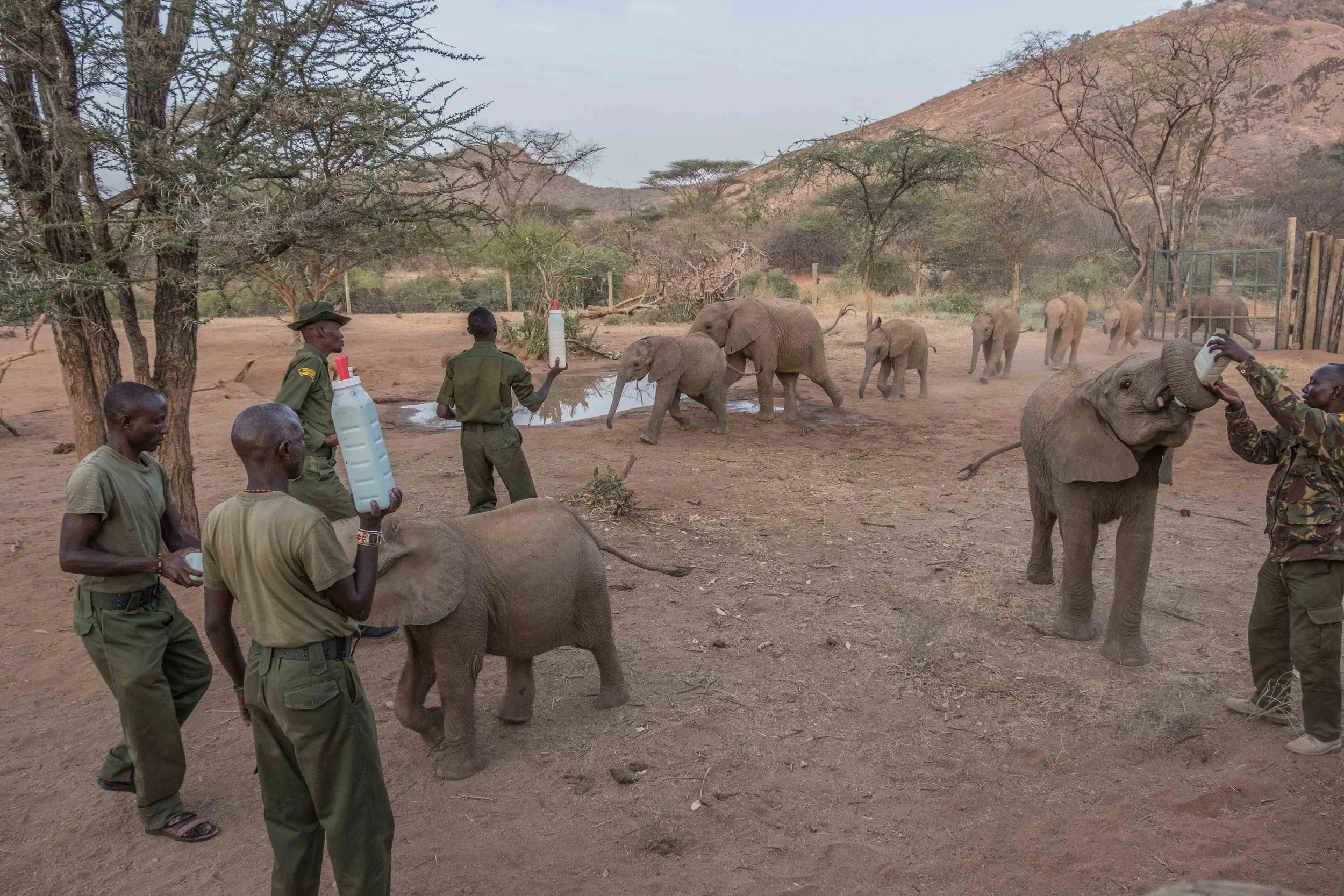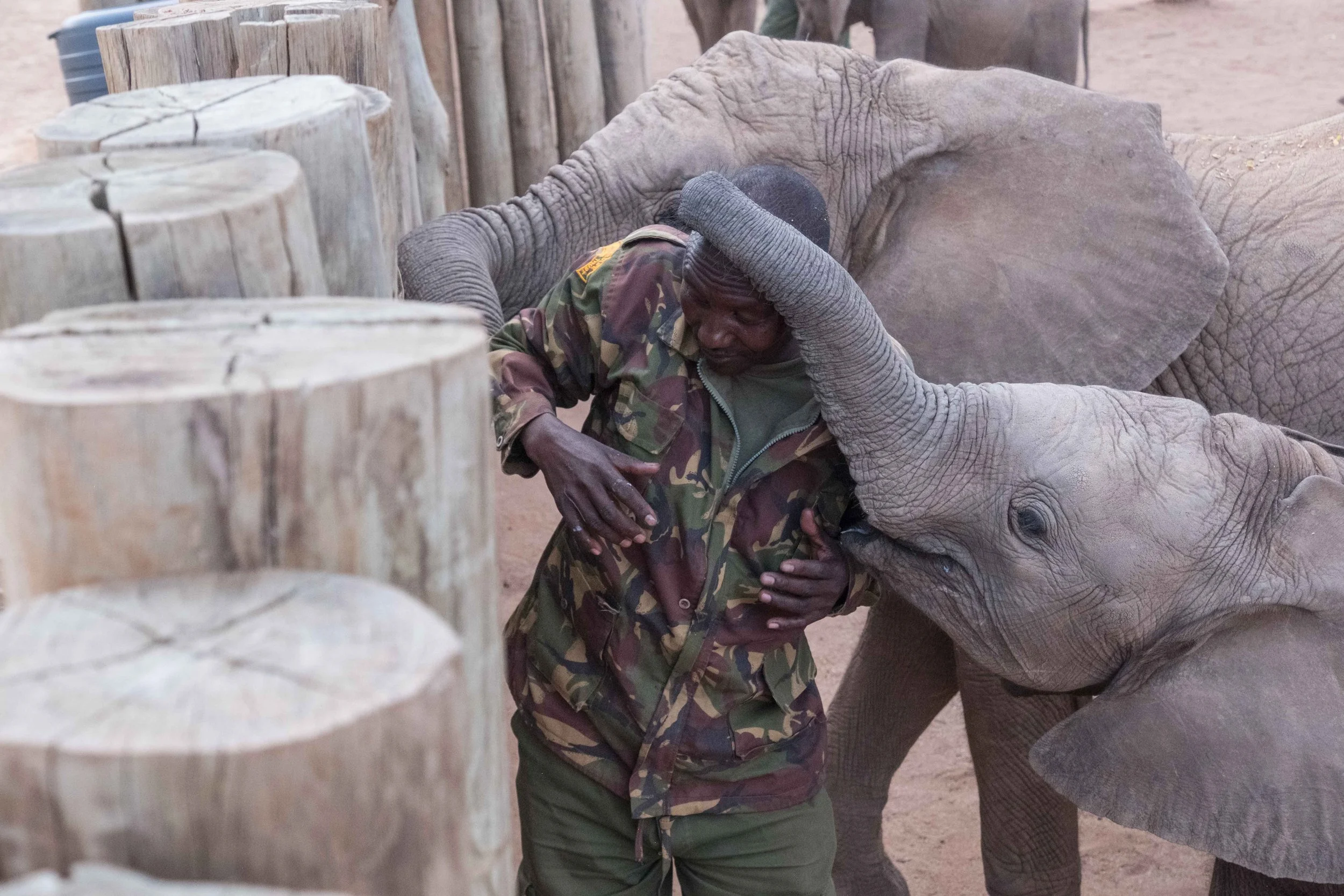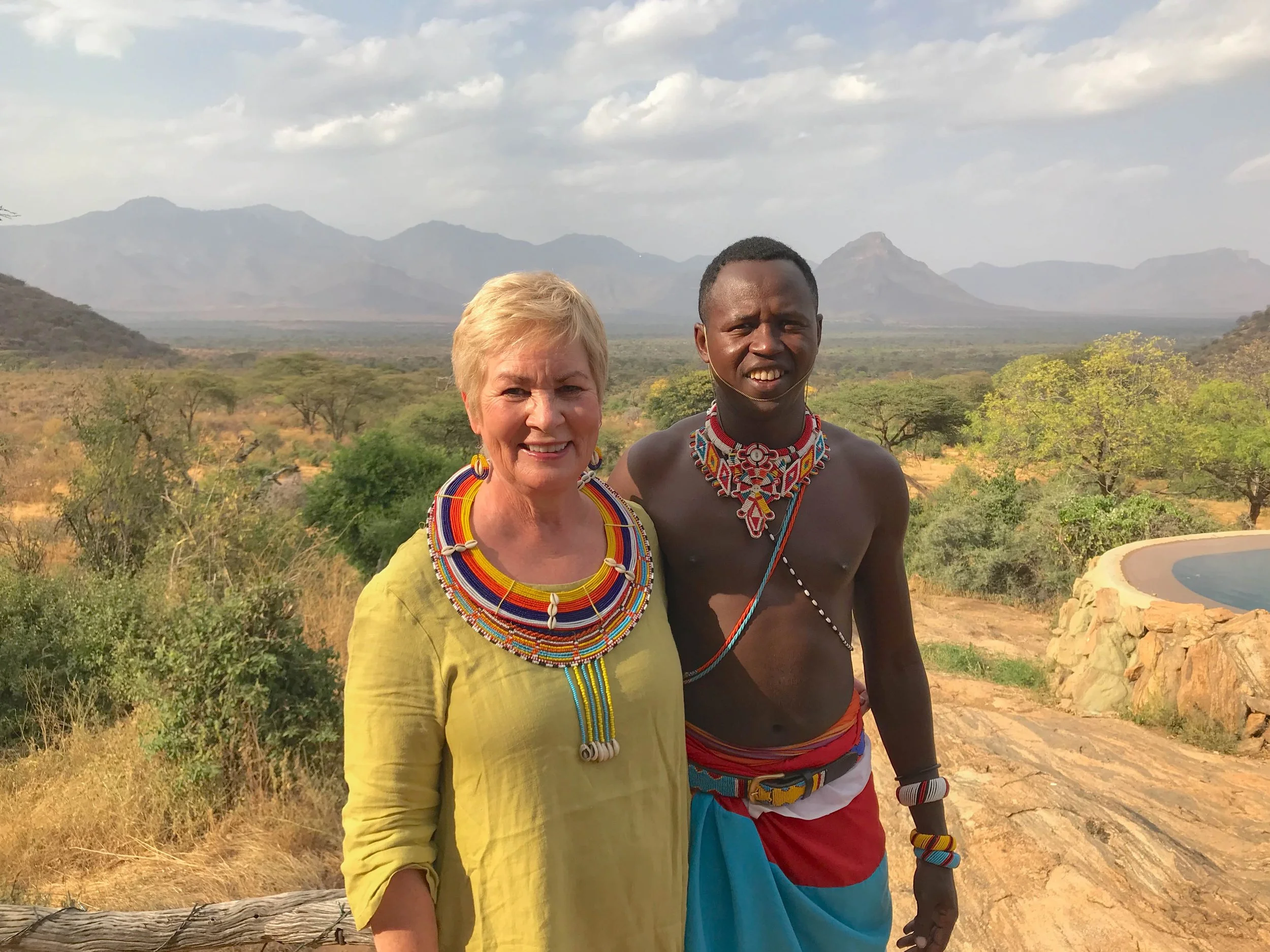Conservation Heroes
Conservation Heroes
80% of the world's remaining diversity is protected by just 6% of the world's population, all of whom are Indigenous Peoples. - Sarara Foundation
Loijipu was only 2 days old when he was rescued.
“Come see the baby rhino,” urged my Samburu guide Robert Lemayian. I was glued to the scene before me of a group of elephant orphans who had just come in to the sanctuary for their late morning bottle feed.
The orphan elephants race in for their mid morning feeding.
It was hard to tear myself away from the happy party of young elephants guzzling their milk then mobbing their keepers with trunk hugging affection.
Elephant love!
“Kathy, come and see!” insisted Robert. He was excited to show me Loijipu a black rhino orphan who came to Reteti when he was only 2 days old. Approximately 4,000 black rhino and 15,000 elephants once roamed this area of Northern Kenya. The surge in demand for rhino horn and ivory and a ban on hunting in 1977 created a perfect storm for poachers and the black-market trade in ivory and rhino horn.
With no protection, by the early 1990’s rhinos were completely eradicated from the region and only 400 elephants remained. Browsing rhinos and elephants play an important role in an ecosystem keeping grasslands open. Without these keystone animals the area shifted from grasslands to a woodland cycle leaving the area devoid of wildlife due to lack of grass and increased instances of drought. The degraded landscape became less and less productive for the local Samburu and their livestock.
Robert and Loijipu
Robert’s generation grew up never seeing rhinos in the wild. Loijipu was the first black rhino to be born in a community conservancy in Kenya. No wonder Robert was excited to show him off. This little calf was abandoned by his mother, who had gone to browse and left him behind in February 2017. While she was gone, some curious researchers got too close to the newborn. When his mother returned, she could smell the humans on him and rejected him. When Loijipu was found he was so tiny the Reteti staff could carry him in their arms. He thrived at Reteti under the care of his dedicated keepers, especially Mary, one of the first female keepers at Reteti.
Taking care of an orphan rhino is a 24/7 commitment
How do you pat a rhino? Loijupu poked his little horn through the gaps in the fence begging for attention.
Black rhinos are aggressive but little Loijipu only wanted love.
Loijupu was smoothly translocated to Sera in May 2018 where he was warmly welcomed by Sera Community Conservancy members. Mary stayed with him for two months as he became accustomed to his new surroundings. He is now living on his own, in a fenced territorial area closely monitored by the rangers at Sera rhino sanctuary.
Reteti represents a growing grass roots movement of community focused conservation that is gaining momentum in Northern Kenya. Once heavily poached and severely degraded by instability, the northern rangeland is restoring itself through transparent, self-governed community conservancies that promote the preservation of natural resources in order to create stability, employment and revenue. Now visitors come from around the world to see their wildlife and learn about traditional Samburu culture.
Restoring and preserving the environment has a positive impact on the people, the wildlife and the land. Learn more about the Sarara Foundatin that is investing in Indigenous people, protecting biodiversity and fighting climate change. Better yet come to Kenya with me and meet these conservation heroes!
Kathy & Robert and the Sarara Valley







